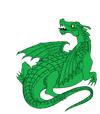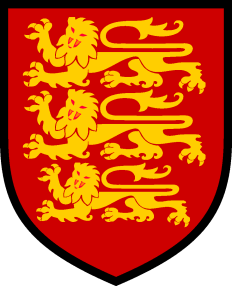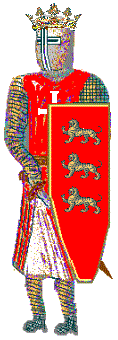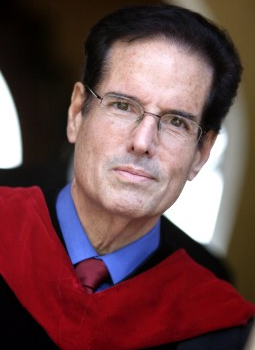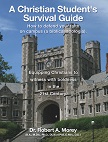BIBLE NUMERICS: FACTS OR FICTION?
by Dr. Robert A. Morey
Bible Numerics: facts or fiction! One day at Calvary Baptist Church in New York City, a friend handed me a little booklet entitled, “Bible Numerics” written by Karl Sabiers. It supposedly “proved” the inspiration of the Bible by finding numeric codes in the Hebrew and Greek text of the Bible.
The author started out by stating that each Hebrew and Greek letter represented a number and that by counting the numeric value of letters we could find hidden meanings in the text that no English reader would ever find.
This made me a little uneasy because I was studying the cults and the occult under Walter Martin. He had taught me that the Bible is a plain book written by plain people for plain readers. It is not a mystical book written with encrypted esoteric messages which only a few enlightened people can understand. Any interpretation which does not come from a historical and grammatical exegesis is suspect. Thus whenever anyone claimed to find hidden meanings in the Bible, watch out! Sabiers’ claim that there were secret numeric codes in the Bible was immediately suspect in my mind.
I was also studying Hebrew under Rabbi Gold at the American Board of Mission To The Jews located on 72nd St. in New York City. My Hebrew teacher, Rabbi Gold, was a Polish orthodox Jew who had survived a Nazi concentration camp and emigrated to NYC. He had embraced Jesus as the Messiah due to the witness of the American Board of Mission to the Jews.
I asked him about the idea that each Hebrew letter represented a number because he had made us memorize the Hebrew words for numbers. If the letters represented numbers in the Hebrew language, why were there words for these numbers? He told me that it was a lie that Hebrew letters had numeric values. He went on to point out several more flaws in the idea of secret numeric codes in the Bible. With this understanding, I threw away Sabier’s booklet and did not give it any further thought.
Many years later, you can imagine my surprise to hear of a sect of. Jews who had developed an apologetic against Christianity by using “secret numeric codes” supposedly found in the Hebrew text of the Torah. Being curious by nature, I went to New York City and attended the Aish Hatorah Discovery Seminar held during the weekend of April 10, 1994. Rabbis Mechanic, Salomon, and Berger were the instructors.
Our textbook was a book entitled Discovery. When we got to page 87 of this book, the rabbi announced that he was going to refute Christianity by Bible Numerics. He took us to Deut. 29:16 in the Hebrew text (v. 17 in English Bibles).
Moreover, you have seen their abominations and their idols of wood, stone, silver, and gold, which they had with them.
He also quoted Deut. 4:28:
And there you will serve gods, the work of man’s hands, wood and stone, which neither see nor hear nor eat nor smell.
The rabbi took the Hebrew word for “wood” and counted the letters backwards and forward 49 times in Deut. 4:28 and came up with the letters which he interpreted to mean “Yeshua,” i.e., Jesus. Thus Jesus was “the idol of wood!” He called this “the code of 49.”
He then used “the code of 50” in Deut. 29:16 and came up with some letters which he also interpreted as a reference to the cross on which Jesus died. He claimed that in both passages there was a secret numeric code, which warned the Jewish people that Jesus was an idol made of wood!
By this time you are probably thinking to yourself, “What in the world are you talking about? Secret numeric codes in the Bible? Jesus is an idol made of wood! You have to be kidding. Only a nut case would believe such nonsense.”
Before you throw this booklet away, you must understand that 100,000 people have attended the Discovery Seminar so far. Their influence in the Jewish community is growing and they are attempting to refute Christianity with Bible Numerics.
I must also point out that several articles have appeared in secular journals, which attempt to prove the inspiration of the Torah by secret numeric codes. Obviously, we will have to deal with this Jewish apologetic now or later. It is not going to go away by itself.
But the real shocker is that there are a few Christian leaders who have fallen for “Bible Numerics” hook, line, and sinker. . In the last year, several prominent Christian leaders have claimed to find secret numeric codes in the Bible. After reading their articles and books, it is obvious that they do not know what they are talking about. They evidently jumped at a “neat idea” to prove the Bible. But they should have looked before they leapt.
In the light of these things, we will examine the system of Biblical interpretation, which is called Bible Numerics or Theomatics.
PART ONE
THE HISTORY OF NUMBERS
In order to understand Bible Numerics we must begin with the history of numbers. Why? We are so familiar with using 1, 2, 3, 4, 25, 100, 1,000, etc., that it will be a surprise to most people to learn that for most of human history such numbers did not exist. If you would have said or written 1, 2, 3, or given simple mathematical equations such as 1+ 1= 2 to the authors of the Bible, they would not have had the slightest idea of what those numbers meant.
Today we refer to these numbers as “Arabic numbers.” This is clearly a mistake in that such numbers as 1, 2, 3, etc. are not part of the Arabic language. While the use of these numbers in Western culture can be traced back to Arab merchants, they did not invent them per se. For example, the number 0 came from India. The plain truth is that Arabs found different numbers being used in different cultures as they traveled around Asia and the Middle East.
These numbers were introduced in Europe in the twelfth century. But it took centuries before they came into common use.
The earliest written records reveal that ancient Middle Eastern cultures such as the Assyrians did not know of numbers. They actually had no concept of abstract numbers. They never discussed numbers in and of themselves in an abstract sense. For example, there was no word for “million” or “billion” in any of the ancient languages.
Any “counting” done in ancient cultures was always done in terms of concrete notations. These notations were based on the idea of a one on one correspondence. For example, they would use a stone to represent a sheep. When they wanted to know how many sheep they had, they pulled out their leather bag and looked to see if there was a correspondence between the stones and the sheep. They would also sometimes cut notches on a wooden staff to correspond to the amount of sheep.
The Babylonians took a pointed stick and made impressions in a tablet of wet clay to represent how many objects they wished to record. The Egyptians used hieroglyphics of animals and other objects to represent amounts. For example, the amount of “one hundred thousand” was represented by the picture of a bird.
Most ancient cultures used their ten fingers to correspond to objects. This is the ultimate basis of our own “base ten” system. But some cultures did not use a base 10 system. For example, the Sumerians used 60 as their base amount.
Since Moses was the first biblical author, it is interesting to note that while he was well
educated in the Egyptian method of keeping track of objects, he never used it in the Pentateuch. Neither did he use the Assyrian, Hittite, or Babylonian systems in the Torah.
The Jews in Moses’ day had words to correspond to the amount of things. These words were treated like any other Hebrew word.
one =. ehed.
two = senayim.
three = salos.
four = arabaa.
five = hames
six = ses.
seven = seba.
eight = smoneh.
nine = tesa.
ten = eser.
hundred = meah.
thousand = eleph.
ten thousand = rebabah
When we write a check today, on the second line we write out the amount in words instead of Arabic numbers. While the Ancient Hebrews had words to correspond to things, they did not have any numbers. For example, in the Genesis account of Creation, Moses gives us a record of what God did on “day one,” “day two,” “day three,” etc.
When Moses wanted to record large amounts, he would write it out word for word. For example, while we would write 930 in Arabic numbers, Moses would write “nine hundred and thirty” (Gen. 5:5). The Hebrew word which represented the highest amount recorded in the Old Testament was ten thousand. That is as high as the Hebrew language went.
What about such numbers as “million” or “billion”? Did these ancient cultures have the concept of such large numbers? No. They could only conceive of an amount that was sitting in front of them. They had no concept of such abstract concepts as million, billion, trillion or zillion.
The concept of “million” was actually invented by an Italian banker 600 years ago when he ran out of words to represent the amount of money in his bank. The concept of a “billion” was invented by a French banker in 1500. Such words as trillion and zillion are also of recent origin. They represent modern advances in abstract mathematics.
Did the biblical authors ever run out of words to express the amount of things? Yes. When Joseph tried to keep track of how much he had stored up during the seven good years, Gen. 41:49 says that he eventually ran out of words to express it. The Egyptians even had a hieroglyphic of a man throwing up his hands in despair to represent an amount for which they did not have a word.
Did the biblical authors ever use the letters of the Hebrew alphabet to represent numbers? No. They used words for amounts, not numbers.
If this is so, was it possible for them to write numeric codes in the Bible using the letters of the Hebrew alphabet for numbers? No. They could not do so because they did not know of numbers. The first documented time the Jews used letters to represent numbers was on some Maccabean coins minted around 200 BC.
Did the authors of the New Testament ever use the letters of the Greek alphabet to represent numbers? No. Was it even possible for them to place hidden numeric codes in their writings? No.
The New Testament followed the Old Testament in using words instead of numbers: one = eis, two = duo, three = treis, etc. Even in Rev. 13:18 the “mark of the beast” is written out in the Greek words, “six hundred sixty-six.”
The historical facts are clear that it was simply not possible for Moses, the prophets or the apostles to use numeric codes in their writings. There is no simply archeological or literary evidence that the pre-exilic Jews ever used the letters of the Hebrew alphabet to represent numbers.
Did Jesus or the apostles ever use numeric codes to interpret the Old Testament? No. Did the early Church Fathers use numeric codes in their interpretation of the Bible? No. Did Augustine, Aquinas, Luther, Calvin, the Puritans, the Pilgrims, or the great evangelical preachers of the past used numeric codes to interpret the Bible? No.
We must conclude that the use of secret numeric codes to interpret the Bible did not come from historic Christian hermeneutics. We will have to look elsewhere to find its origin.
The Zondervan Pictorial Encyclopedia has an excellent article on this subject written by our good friend, Dr. William White. His statement concerning the attempt to find numeric codes in the Bible bears repeating.
Unfortunately the frequent use of notions of symbolism applied to the Biblical numbers have resulted in little less than soothsaying… Most of these types of exegetical systems have been based upon the assumption that the later Jewish system of replacing each number 1-9, 1-10, with the sequential letters of the Heb. alphabet was practiced throughout the Biblical period. Thus, any term in the MT can be deciphered into a code of numbers.
For example, the consonantal text of Genesis 1:1 begins with br’syt which is deciphered in terms of numerals as b = 2, r = 200, ‘ = 1, s = 300, y = 10 and t = 400, thus the first word of Genesis equals to the total of these numbers or 913 which is then interpreted mystically. This sort of magical nonsense arose during the Hel age and was applied to many other ancient writings under the term “germatria,” a corruption from Semiticized “geomatria.” Such gnostic exegesis contradicts the clear Biblical principle stated in 2 Peter 1:20, “that no prophecy of scripture is a matter of one’s own interpretation.” (Vol. 4:460)
Dr. White has sounded a strong warning to all those who believe in secret numeric codes in the Bible. They are swimming in the dangerous waters of a gnostic hermeneutic which has already spawned far too many cults.
Summary
Enough has been demonstrated to prove that Bible Numerics is based on a mathematical system unknown to the authors of the Bible. Thus Moses, the prophets, and the apostles would have been quite shocked to see their writings interpreted in this way.
Bibliography
All standard reference works have an article on the history of numbers. See also those books written specifically on the subject.
Carl Boyer, A History of Mathematics, (NY: John Wiley & Sons)
Patricia Lauber, The Story of Numbers, (NY: Random)
The International Standard Bible Encyclopedia:
The Zondervan Pictorial Encyclopedia of the Bible:
The Encyclopedia Americana:
Encyclopedia Britannica:
The Encyclopedia of Physical Sciences:
Bible Numerics by Dr. Robert Morey.
PART TWO
The Rise of the Cabala
The origins of the present form of “Bible Numerics” can be traced back to an occultic form of Jewish mysticism that arose in Germany around A. D. 1200 among the Hasidic Jews. It was called the Cabala (or Kabala), which simply means, “that which is received.”
The Cabal was a revolt against the hermeneutical principles of historical grammatical exegesis. It rejected the traditional rabbinical interpretation of Scripture. As a matter of fact, it was a deliberate rejection of the teachings of Moses Maimonides. Thus Cabalism has never been part of mainstream Judaism and has been viewed as an occult art by many orthodox Jews.
Cabalism was one of the fruits of the rediscovery of the works of the ancient Greek philosophers particularly Pythogoras who believed that ultimate reality was composed of numbers. The influence of Greek philosophy on cabalism can be seen in its infatuation with pantheism, reincarnation, magic, astrology, and numerology. The Tarot card and the monstrous Golem were both invented by the Cabalists.
Pythogorian numerology led the Hasidim to reinterpret the Torah according to numerics. The great Cabala book, Sefer Yetzirah, begins with the statement, “He created His universe by the three forms of numbers, letters, and words.” The Cabalists claimed to be able to see underneath or behind the words of Scripture to a hidden numeric meaning. This took three forms:
Gematria
A. Gematria: Converting letters, words and phrases into numbers and then adding the numbers up to find hidden meanings.
For example: Gen. 1:1 in the Hebrew text has seven words. That it has seven words instead of six words or twenty words must have some kind of mystical significance according to the Cabala. If we count the number of letters making up these seven words, they come to 28 letters. Since 28 is divisible by seven, Moses’ use of. 28 letters (7 x 4) must have deep mystical significance.
The “true” meaning of Gen. 1:1 is not to be found in the words of the text per se. What Moses is really saying is that the number seven has a special mystical meaning. When we combine this observation with the fact that there are seven days of creation and that seventimes the creation is called “good” (vs. 4,10, 12, 18, 21, 25, 31), the Cabablist is absolutely convinced that he has found a secret “code of seven” hidden beneath the text.
The only problem with this procedure is that Moses never heard of the idea that Hebrew letters meant numbers. He would have been dumfounded at the idea of counting letters and words to find a hidden meaning.
To this we must add that the original Hebrew text did not have verse divisions. According to many Hebrew scholars, Moses wrote one sentence that we have artificially broken into two verses. I translate it as follows,
When the Beginning began,
God created out of nothing, the heavens and the earth,
and the earth was [after its creation] formless and void,
darkness was over the surface of the deep,
and the Spirit of God was hovering over the surface of the waters.
The use of the vav consecutive “and” as the first word in verse two usually means that the sentence is continuing. This is why many Hebrew scholars believe that the Hebrew sentence which began in verse one is continued in verse two. Thus verse one is not a separate sentence from verse two. If this is true, then we have to count the number of letters in verse two as well as the number of letters in verse one in order to find the numeric value of the sentence.
We have already seen that verse one has 28 letters. Verse two has 52 letters. Since 52 is not divisible by seven, the “code of seven” breaks down. If we add the letters from verse one and two together to find the numeric value of the sentence, we end up with 80 letters. The “code of seven” once again breaks down because 80 is not divisible by seven.
Notarikon
B. Notarikon: Using the letters of words to form new words by using them in acrostics going up, down or across. The first Hebrew word in Gen. 1:1 is berashith. Each letter has been used to make a new word with all the new words making up a new sentence which is the “secret” meaning of the word.
While Cabalistic Jews came up with: “In the beginning God saw that Israel would accept the Law,” Cabalistic Christians came up with, “Ye shall worship my first born, my first, whose name is Jesus.” We have seen at least six different examples of a notarikon done on the word “beginning.” Evidently, you can make a notarikon to fit whatever you want it to say.
Another example of a notarikon is found below.
s l l k j d h s i h s n d s d
s d k h o c t h c a h u u a f
l d h t i i f i i l l s n h t h j
f s d j r j r h i f w i b i k s
k d j g e l k d n s l i t h j m
g g l m r t g s h b c s f h h.
f l u g h j b d f r e t h v s s
f n d o s n i s l e l n k s b e
d g u g h j d b d h e d t i k.
There is a hidden message in the words above. If you put together every second letter on line 8, what do you find? If you make an acrostic starting with the second letter “n” on line 8 going up diagonally, what do you see? Can you find the word “nuts” in the diagram?
Temurah
C. Temurah: Making anagrams and other “word games” by inverting or substituting letters to make up new words. For example, if we take the last letter of each word which makes up the phrase in Hebrew, “Who is like unto thee among the mighty, O Lord?” we end up with YHMHYH.
Now, the letters YHMHYH do not constitute a word. They mean nothing in and of themselves. But YHMHYH is viewed in the Cabala as a “word of power” which will protect you from your enemies.
Hebrew Prayers
The Hasidim applied numerics not only to the Torah but also to traditional Hebrew prayers. They added up the numeric values of letters, words, and phrases to find hidden meanings in their prayers. But this backfired on them as Catholic Cabalists found blasphemous attacks on Jesus in these prayers and used them to justify various violent pogams.
The Bible
The historical grammatical meaning of Scripture was ignored in the Cabalistic rush to discover clever new ways of coming up with hidden messages. The words and sentences of the Bible lost any meaning. The historical and literary contexts were ignored. The only meaning was a “hidden” numeric code, which could be found in acrostics, anagrams, and the numeric values that could be made out of the letters and phrases of words.
The end result is what I saw at the Discovery seminar in New York City. The rabbis deleted all spaces between words and ended up with one continuous line of letters. (ex. teihodhohehaoidhlaehoahiodhaofhiaoghvnln). They claimed that if the Torah was reduced to one continuous line of letters with no spaces, it would stretch down several NYC blocks.
Using the “warp around” feature of the computer, they reconfigured this line of letters into any size page they needed to create any acrostic or anagram they wanted. If printed, the text could be eight feet by eleven feet just as easily as eight inches by eleven inches.
They had their computer reconfigure the line of letters to make a text which would give them the name of a modern Jewish scientist or some current event in an acrostic, anagram or by various numeric “codes.” For example, they counted forward ten letters and then counted backward 50 letters and come up with amazing things. They moved up, down, and diagonally in acrostics and anagrams. By reconfiguring the text, they even came up with the name of every famous rabbis. They boasted, “The Torah has all knowledge and all truth. Thus we can find in its hidden numeric codes the names of anyone and the events of everything.”
They even found French, German, Russian, and English words in the Torah. How? They reconfigured the text until they came up with a “code” which produced a set of Hebrew letters which when pronounced as a word sounded like a French, German, Russian or English word. In this way they “proved” the Torah talked about modern events.
The main problem with this approach is that if you can prove anything and everything by numeric codes, then they mean nothing! When I asked the rabbi if I could take the word “gold” and reconfigure the text to find a code which, starting from one of the letters in the word “gold,” would show that Judaism is an “idol of gold,” he said that he would not advise such “illegitimate” use of numeric codes.
Conclusion
Bible numerics grew out of the occult movement known as the Cabala. It did not come from the prophets, the apostles, Jesus or the Christian Church. Its root is clearly in the cult of the Hasidim.
Biography
Richard Cavendish, The Black Arts, (Capricorn, NY, 1967)
Daniel Cohen, Ceremonial Magic, (Four Winds, NY, 1979)
Colin Wilson, The Occult, (Ramdon House, NY, 1971)
Gershom Scholem, Major Trends In Jewish Mysticism, (Schocken Books, NY, 1974)
Johann Renchlin, On The Art Of The Kabbalah, (Abaris Books, NY, 1983)
Venetia Newall, The Encyclopedia of witchcraft, (Dial, NY, 1974)
Joseph Blau, The Christian Interpretation Of the Cabal in The Renaissance, (Columbia
University Press, 1944)
Bernard Pick, The Cabala, (Open Court, Chicago, 1913)
Christian Ginsburg, The Kabbalah: Its Nature, Development and Literature, (Macmillan, NY,
1863)
Discovery, (AISH Hatorah, NY, 1991)
When we refer to “Bible Numerics,” we recognize that the phrase can have several different meanings. In its most benign form, it is true that one or two authors of the Bible took a number and gave it a special meaning. But the number of passages in which they did this is very small. The “mark of the beast” 666 (Rev. 13:18) and the 144,000 referred to in Rev. 7:4 are almost the only examples we have of this. But the majority of the biblical authors did not do this at all.
Second, some people have taken these few examples and have proceeded to build an entire hermeneutical system based on numerics! Given the rarity of the symbolic use of numbers in the Bible, are they not making mountains out of molehills? It seems so to us.
Third, nowhere in Scripture did the Patriarchs, the prophets, the apostles or even Jesus Himself ever use numerics as a hermeneutical method to interpret Scripture. Did Jesus or Paul ever use numerics to interpret the Old Testament? No. They used grammar and syntax.
Fourth, not once in all of Scripture is there any discussion of the abstract “meaning” of numbers per se. For example, while it is true that the creation week was composed ofseven days, nowhere in the Bible do we find a discussion of the mystical meaning of the number seven. Why is this? The authors of the Bible died long before abstract mathematics was invented. They were no more able to grasp abstract math anymore than they would have been able to understand nuclear energy.
Fifth, in the few instances where a number is assigned meaning, there are as many interpretations of those numbers as there are numeric books on them. Total chaos reigns in the field of numerics because people can assign any meaning they want to numbers.
Lastly, the authors of the Bible did not assign any mystical meanings to individual Hebrew or Greek letters. They never counted letters, words or phrases. They never used acrostics or other gimmicks to interpret the Scriptures of their day. “Bible Numerics” as it understood today is foreign to Scripture.
Bible Codes Update
by Dr. Robert Morey
It is always feels so good when you can say, “I told you so!” In my analysis of the so-called Bible codes (Order your copy today, $3.95), I predicted that the methods employed by the code peddlers would work on any piece of literature and would come up with whatever you want. Two recent publications have proven me 100% right. People magazine on 11/3/97 ran an article on Dave Thomas whom they called the “Code Breaker.”
Thomas programmed his computer with the same computer program used by the Code peddlers. With an obvious sense of humor, he first applied it to the book of Genesis and came up with “The code is bogus,” “Darwin got it right,” and other “hidden” messages. He then applied it to the book War and Peace and found the hidden prophecy “Guilty Lee Oswald shot Kennedy: Both died” and such prophetic words as “Nazi” and “Hitler.” Still in a humorous mood, he then applied the code methods to Drosin’s popular book, The Bible Code, and came up with the “hidden” messages: “code,” “silly.” and “hoax.”
The People magazine article then referred to another code researcher named Brendan McKay who found hidden codes in the book, Moby Dick which “prophesied” the death of Martin Luther King, Jr. and Leon Trotsky. Thomas and McKay have demonstrated what I have said all along: Any method that can prove anything and everything proves nothing.
On the other side, Yacov Rambsel put out his book, Yeshua: The Name Of Jesus In The Old Testament (Toronto, 1996, Frontier Research Pub.). He used the same code methods used by the Jews and like them found the name “Yeshua” (i.e. Jesus) in the Hebrew Torah. But there was a big difference between where they found the name and how they interpreted it.
The Discovery Seminar used the codes to “prove” that Jesus was an idol of wood and a false god. But Rambsel used the same codes and found multiple passages that “prove” that Jesus is the Messiah! Who is right? The inescapable fact that confronts all code peddlers is that the codes can be used to prove whatever you want to prove.
(Note: Dr. Morey’s analysis of the Bible Codes illustrates once again that subscribers to The Journal of Biblical Apologetics are on the cutting edge of theology and apologetics. We are not aware of any other well-known apologist who traced the occultic origins of the codes and demonstrated their fraudulent nature with solid research and scholarship. See https://njiat.com/apologetics.html to read the electronic version of The Journal of Biblical Apologetics.)






